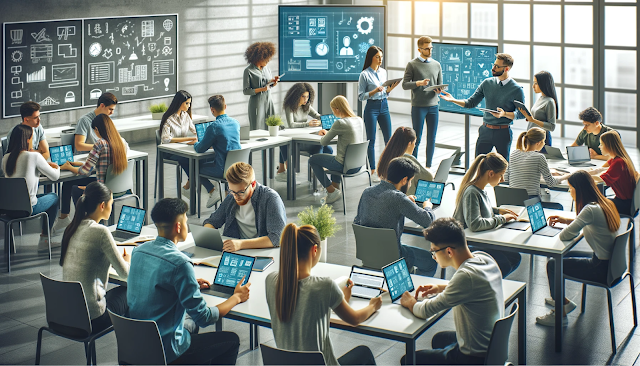Flipped learning in education
Flipped learning (FL) is an innovative educational model that inverts the traditional classroom structure. In this model, students prepare at home with study materials, such as video lectures and reading materials, and then use classroom time for in-depth exploration of the topics. This method stimulates intrinsic motivation (IM) and independent learning, leading to a deeper and more meaningful learning process. Many in education are already somewhat familiar with FL and its benefits. Yet FL could be applied more.
Effects of Flipped Learning on Intrinsic Motivation
A recent systematic review, published in Education Sciences, examined the relationship between FL and IM in higher education. According to Alonso et al. (2023), the application of FL improves students' IM as it addresses basic psychological needs promotes autonomy, competence and relatedness. This makes FL an increasingly common method at universities worldwide.
Features of Flipped Learning
The study identified several aspects that are essential for the success of FL, including using diverse and attractive materials, integrating game elements (gamification), creating interactive learning environments, and redesigning course content. These elements are crucial for stimulating IM and meeting basic psychological needs according to self-determination theory.
- Preparatory Learning: students study the study materials at home, such as video lectures and reading materials, which allows them to prepare and understand basic concepts at their own pace.
- Active Class Sessions: Classroom time is used for in-depth exploration of topics, discussions, project-based learning, and practical applications of what is learned at home. This makes the teacher more of a facilitator or coach.
- Student-Centered Approach: FL emphasizes student participation and self-discovery, allowing students to participate more actively in their learning process.
- Flexibility: FL allows students to learn in a way that best suits their individual learning preferences and pace.
- Interaction and Collaboration: There is more room for interaction between student and teacher, which promotes collaboration and peer-to-peer learning.
- Use of Technology: FL often uses digital tools and online resources to deliver instructional materials.
Practical implications in education
The practical implications of these findings are significant. Teachers can use these aspects as a guideline in their lessons to intrinsically motivate students. Although there is no universal script for all FL interventions, preparation before class helps students focus on problem solving and active participation. The flexibility of FL makes it suitable for different educational environments.
Conclusion
The conclusion of Alonso et al.'s (2023) study emphasizes the importance of FL in contemporary education. Through the effective application of this method, students can not only improve their academic skills, but also develop greater autonomous motivation and involvement in the learning process. This makes FL a valuable addition to the educational landscape.

Comments